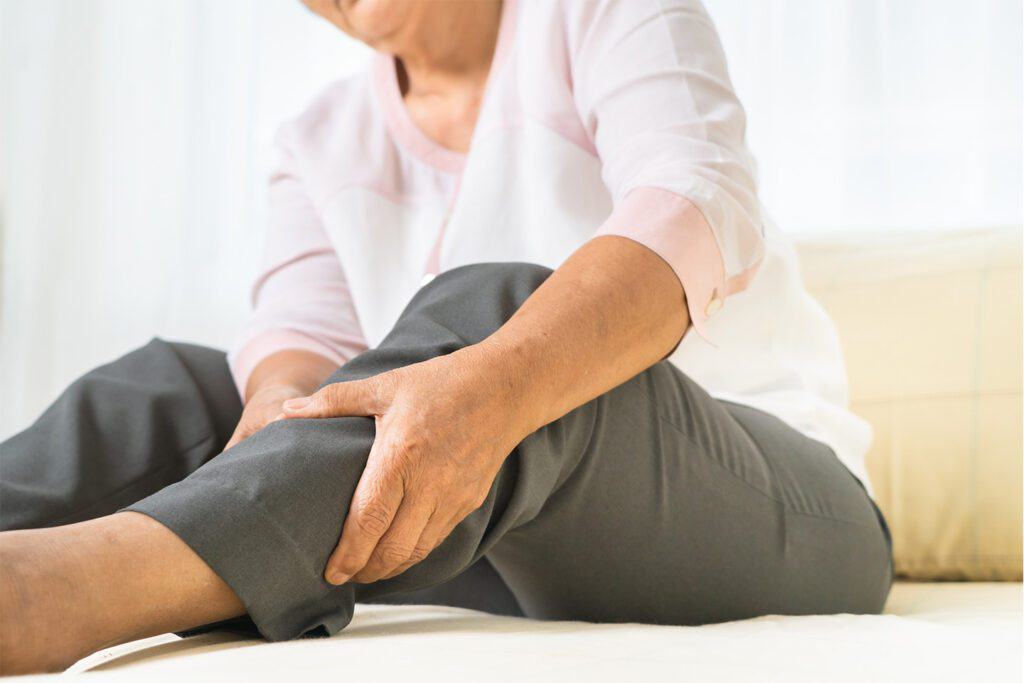Deep Vein Thrombosis (DVT) occurs when a blood clot forms in one of the deep veins in the body, most commonly in the lower extremities. You are more at risk for developing a DVT if you are sedentary for long periods of time, elderly, obese, have had recent surgery, or on hormonal therapy. A critical issue arises if the clot breaks loose and travels to the lungs. This occurrence is called a pulmonary embolism (PE) and can be life threatening.
There are three main reasons that blood clots form. The first one is stasis (inactivity) of blood – this is why doctors insist people move after surgery. The second reason a blood clot can form is due to injury of a blood vessel, which can come from an accident, trauma, or recent surgery. The third cause is ‘thick blood,’ which can occur in people who have cancer or clotting abnormalities.
Symptoms of DVT may range from mild to severe, and in some patients do not appear at all. The symptoms can develop overnight or over a short period of time. If you are experiencing any of these symptoms, you should seek an evaluation by your medical provider immediately.
Many women do not realize that they are at an increased risk for DVT during different stages in their lives.

Pulmonary Embolism can be fatal, and you should seek medical attention immediately. This can occur with or without signs or symptoms of DVT.

You Have a Choice When It Comes to Vascular Care.
Get an Appointment at VIC In 1 to 3 days – Without a Referral!
You Have a Choice When It Comes to Vascular Care.
Get an Appointment at VIC In 1 to 3 days – Without a Referral!
DVT Diagnosis is often confirmed with a Duplex ultrasound which can determine the location of the clot within the deep vein system. This study is performed by placing an external probe on the skin over the affected area using sound waves to see into the body.
DVT Treatment will depend on the location of the clot and the extent of the clot burden, and may include anticoagulation, placement of an IVC Filter, thrombolysis, thrombectomy, or sometimes serial ultrasound observation. Complex therapies are often performed by vascular surgeons.
DVT is avoidable, and the following preventative measures can help you remain healthy and clot-free:
This means exercising regularly, eating well, and eliminating vices like smoking. Regular exercise lowers your risk of developing blood clots, since it gets your blood moving, whereas inactivity and obesity increase your chances of developing DVT. Smoking also affects your circulation and blood clotting.

Whether you’re traveling across the country or sitting at your desk all day, make sure to get up and move every two to three hours. Walk around or do leg exercises in your seat, such as contracting and relaxing your muscles and raising and lowering your legs. It is especially important to move around as soon as possible after being confined to a bed for surgery, illness, or injury.
Graduated compression stockings are made to compress the ankles and legs. The pressure pushes fluid up the legs and aids in blood flow from the legs to the heart. Some studies have shown this type of compression can help prevent blood clots in those who are post-surgery or trauma and those on flights longer than four hours.
You may have specific markers that put you at greater risk of developing DVT, such as family history, chronic illness, or injury. Discuss what additional preventative measures you could take to reduce your risk of developing DVT.

A blood clot formed deep in the vascular system can move to the heart and lungs; this is called a Pulmonary Embolism. The veins in the body help to move the blood through the body leading back to the heart. If the clot breaks free, the condition becomes serious very fast, requiring medical attention immediately.
Many times, experiencing the signs of DVT can indicate an emergency situation. When a blood clot forms, it’s crucial to seek immediate medical help for diagnosis and treatment.
DVTs generally do not resolve on their own. Deep vein thrombosis medication, such as blood thinners, is typically prescribed as the treatment plan, highlighting the necessity of medical monitoring and decision-making.
With early diagnosis and a treatment plan that may include deep vein thrombosis medication, DVT can often be managed and overcome. Over a three to six-month course of anticoagulation, approximately half of DVTs will resolve completely. However, some patients may develop chronic vein issues that increase the risk of future DVT events, potentially requiring long-term anticoagulation.
The sensation of what deep vein thrombosis feels like can vary greatly from patient to patient, depending on the size and location of the blood clot. Pain is frequently one of the symptoms of DVT in the leg that prompts individuals to seek professional evaluation.
Call now to book an appointment.
Conveniently located near Northgate Mall.